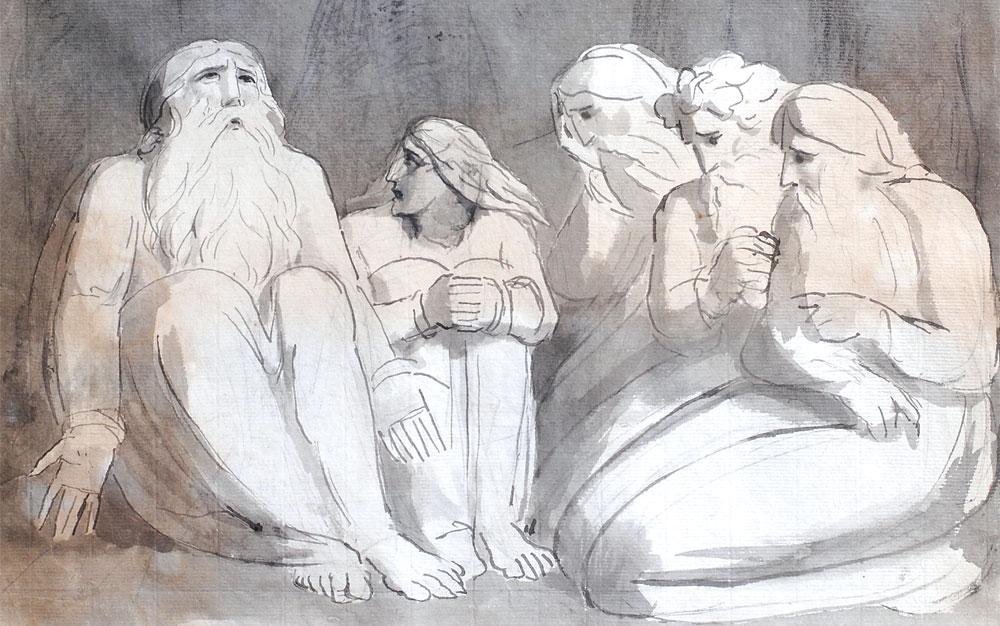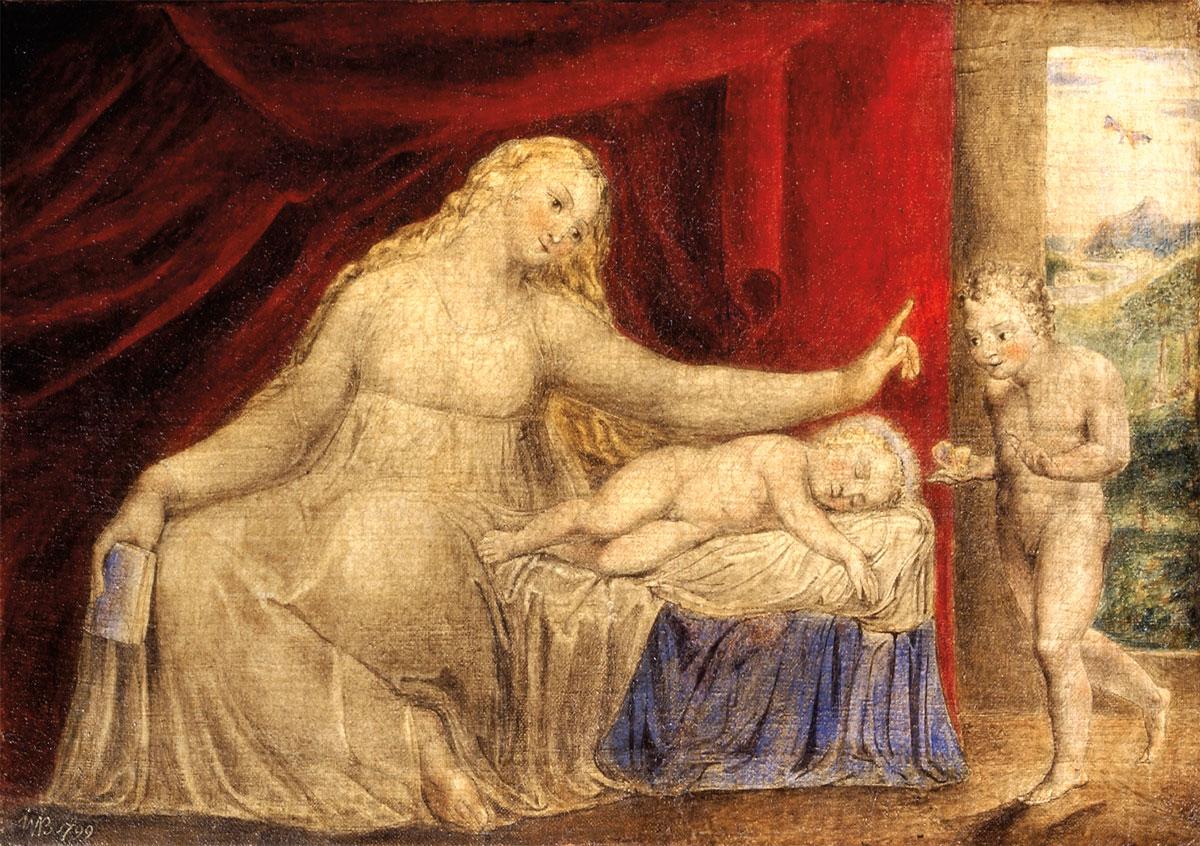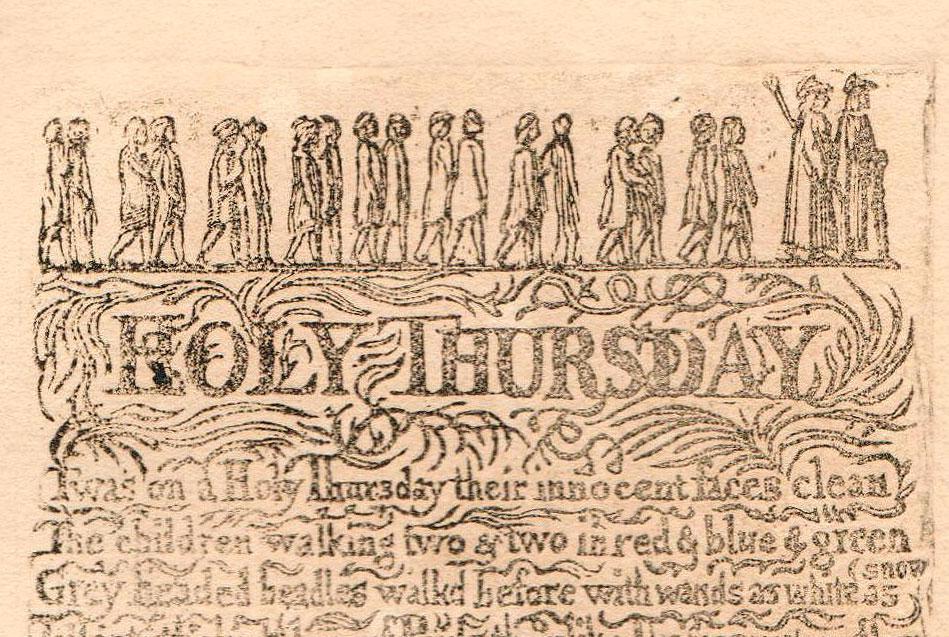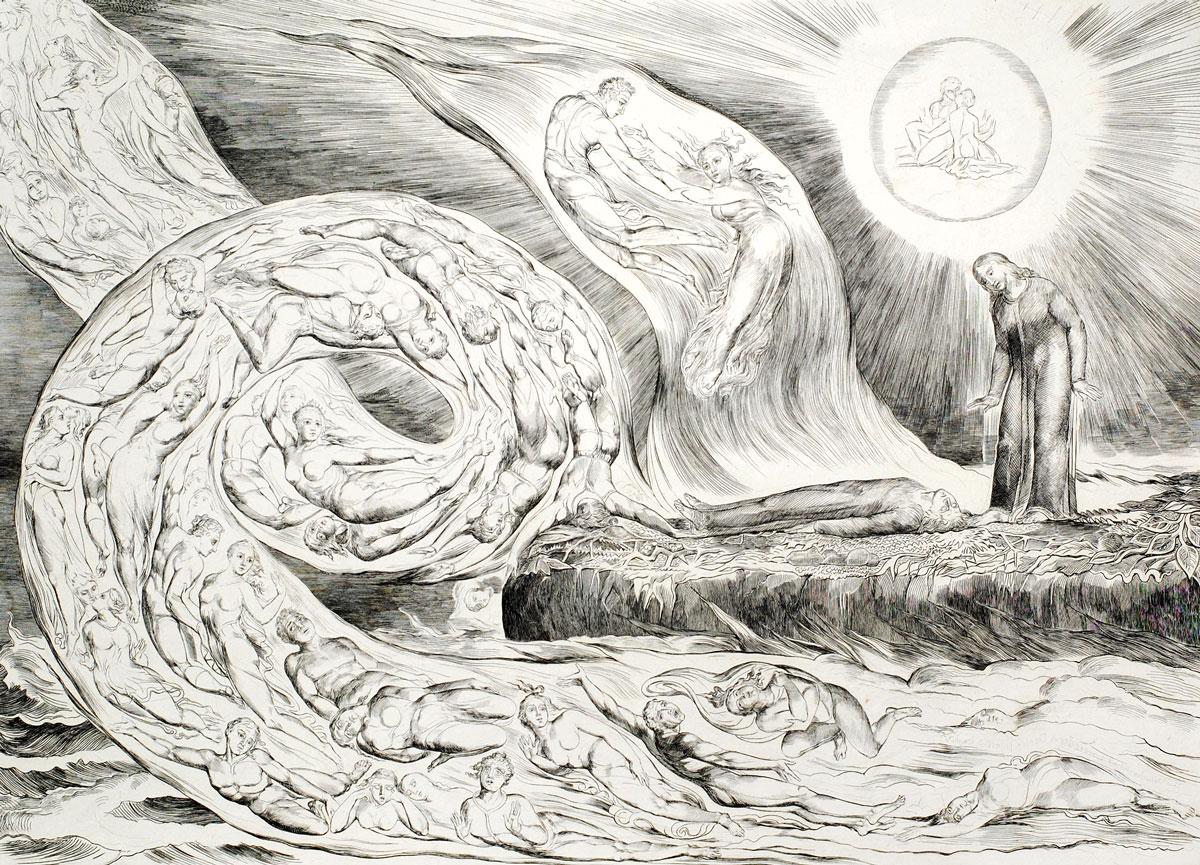“Blake has been supporting me my entire life,” said Windle, who has been in the rare book business for more than forty years, selling Blake’s books and the occasional work of art for most of that time. For years, he said, sublime pieces of art had come through the shop, but he never had a dedicated space for them. Recently, after acquiring the Blake archives of Trianon Press, Windle realized that he had millions of dollars worth of Blake material and nowhere to exhibit it. A venue became available down the hall from his bookshop, and Annika Green, who had been working for Windle on his rare book catalogues, signed on to become the new gallery’s director.
The gallery has a 1,000-plus item catalogue, which includes art, books, and prints for sale at various price points. One of Windle’s goals is to make Blake affordable to all, and he loves to turn young people on to Blake: “They get older, they make money, they remember, they come back.” The gallery will bring in new clientele with the aim of enhancing both businesses. Windle hopes that art enthusiasts, who would not otherwise have ventured into an antiquarian bookshop, will now find their way to him.
Green said she believes that we are seeing a resurgence in Blake’s popularity in contemporary culture, and referred to the fact that Kit Harington (the Emmy-nominated actor who plays Jon Snow in Game of Thrones) dramatically recites Blake’s poem, “The Tyger,” in a swanky 2016 car commercial promoting the release of the Infiniti Q60. It also bears noting that both Patti Smith and recent Nobel Prize winner Bob Dylan have written songs inspired by Blake: Smith’s “My Blakean Year,” and Dylan’s “Every Grain of Sand.”
Always in Paradise was on view through the spring of 2017. After this exhibit, Windle displayed works by emerging and established artists who are responding to Blake. For example, photographer Joel-Peter Witkin has created an homage to Blake’s Songs of Innocence and Songs of Experience. The idea of presenting new work that dovetails with Blake’s mystical spirit delights both Windle and Green. With a five-year lease on the space and plans to put together four shows a year, mixing their inventory with the work of Blake’s circle (including Henry Fuseli) and with modern complements, the gallery has plenty of fertile territory and material to keep us all enraptured.
































